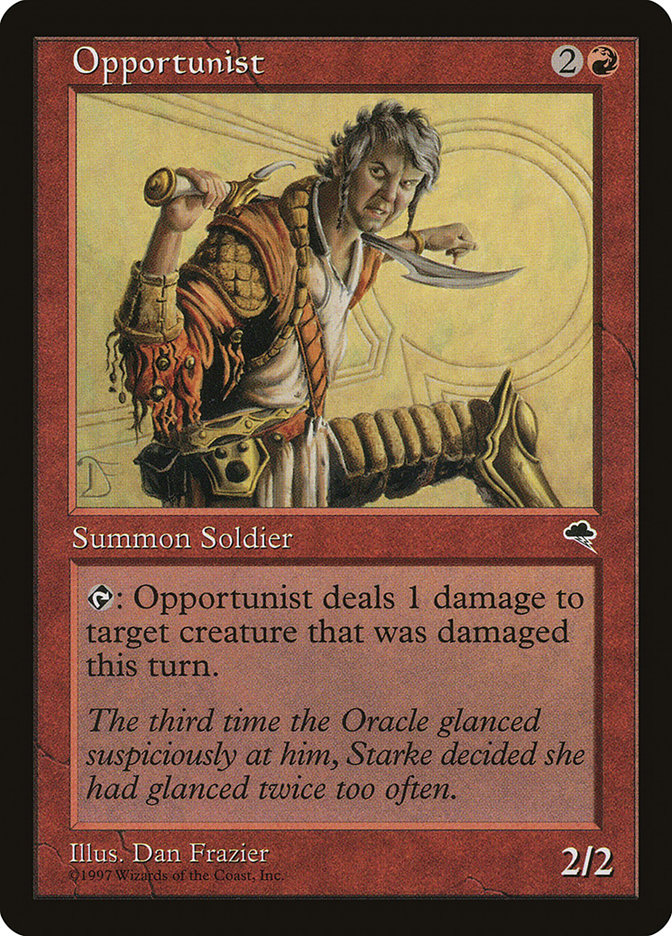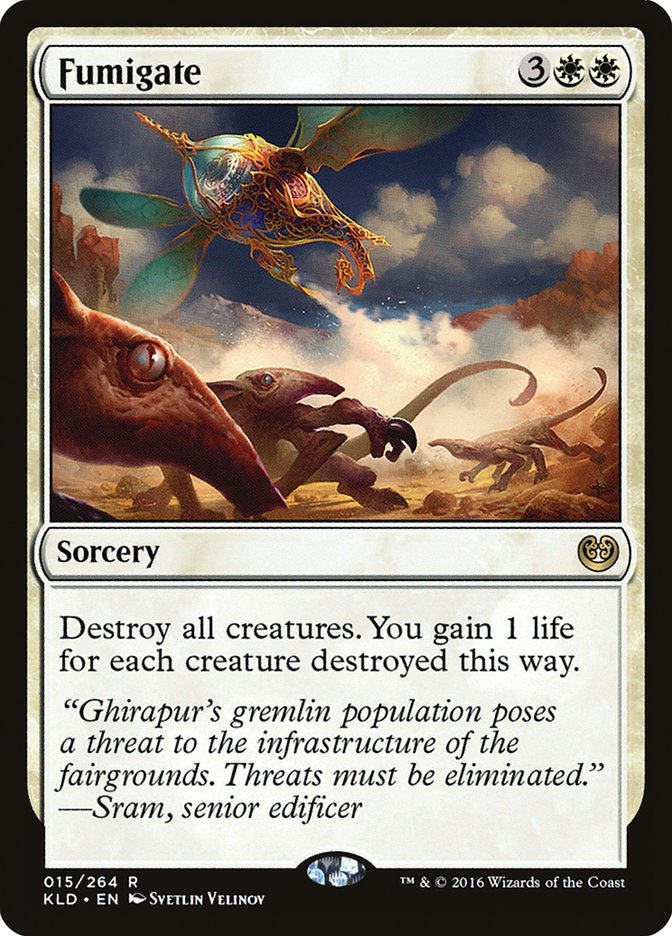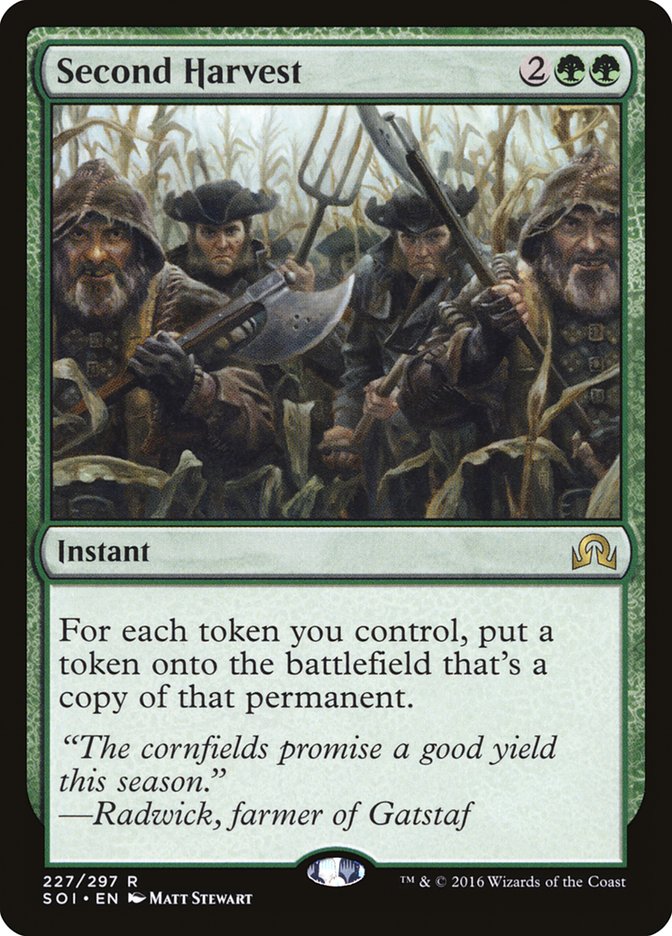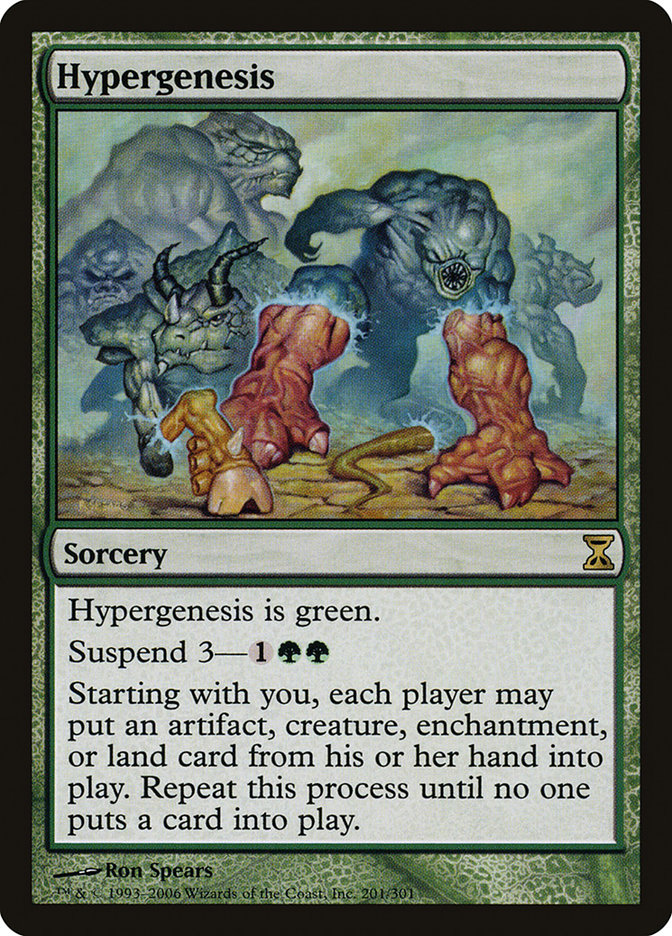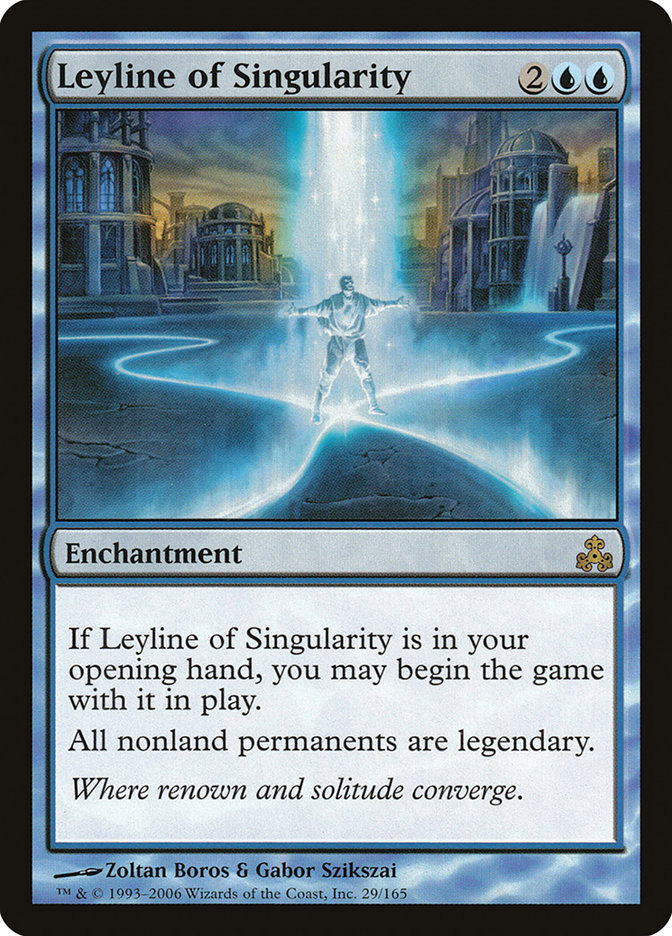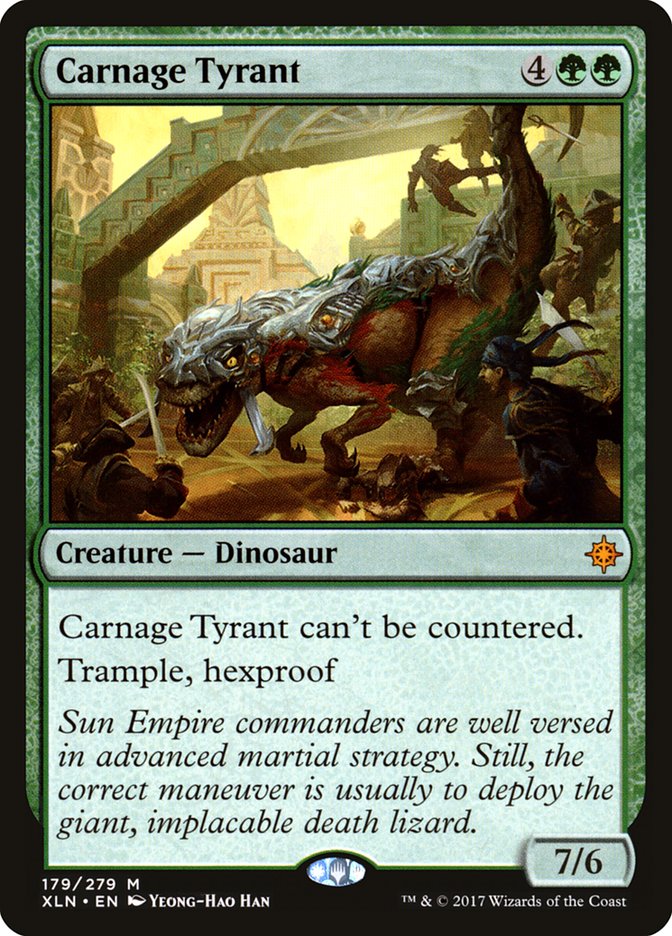A few years ago, I wrote an article about my favorite
Magic finance heuristics
: the rules of thumb that I stick to in order to be successful with my
purchases and trades.
Today, it’s time to examine the flip side of those heuristics and take a
look at some of the most common misconceptions about Magic finance.
Everything I’ve included here are ideas I’ve seen professed time and again,
and I think that it’s worth taking a week to talk about why each of them is
incorrect – or at least incomplete.
Many thanks to my Twitter friends for helping me put this list together.
You can follow me (@ChasAndres) if you’d like to help me with collaborative
articles like this in the future.
“There’s no such thing as a win/win trade.”
Even if you don’t think that you agree with this misconception, there’s a
reasonable chance that you operate this way regardless. Most of the traders
that I run into these days seem to operate this way, which makes the whole
endeavor all kinds of frustrating.
The era of the “value trader” should be more or less over at this point.
Everybody is price conscious, we all know all the tricks, and we all have
rapidly-updating digital price guides in our pockets. If you’re out there
“grinding tables” at this point, you’re probably just bullying and
frustrating people into giving you incremental value. There are a few
people out there who can legitimately pull this off, mostly by trading
things like foreign foils that you can’t get anywhere else for staples that
are easier to buylist or flip online, but they are the exception that
proves the rule.
And don’t think I’m just calling out the flashy pro traders here. Most of
the worst trade experiences I’ve had have been with that one dude who turns
into Jordan freaking Belfort the moment he has more than two decent cards
in his trade binder. If you operate on the belief that you have to “win”
each trade because otherwise you’re the one losing, everybody suffers.
Instead of using trading as a tool to grind value, you should be using it
to avoid all of the small fees and value lost in the process of selling
some parts of your collection in order to buy what you need. For example,
let’s say that you have an extra Snapcaster Mage ($80) and you need a set
of Polluted Deltas ($19 each). You could sell your Snapcaster Mage in order
to raise the cash, but it’ll take time, you won’t get full retail for it,
and you’ll have to pay shipping fees and seller’s fees on top of that.
Or you could just trade your Snapcaster Mage for a set of Deltas. Even
though you’d be “losing” that trade by $4, it’s the very definition of a
win/win. I know trading isn’t very popular these days, but you should
absolutely be using it as a resource for this sort of transaction.
You should buy this boxed set/preconstructed deck for $30 because it
has $90 worth of value inside!”
This misconception is fresh on my mind because of the Challenger Decks, but
the logic here also applies to Commander decks and (in a slightly different
way) Masters sets.
Whenever WotC releases a new product containing reprints, we tend to
evaluate it (at least in part) based on the value that those cards had
before they were reprinted. This is an interesting intellectual exercise,
but it stops being useful as soon as the new product hits shelves.
First, some cards are always going to have a more elastic value than
others. Cards that are expensive due to low supply always fall a lot
farther than cards that are expensive due to high demand, which is why many
of the staples in Eternal Masters tanked harder than most of the
staples in the Modern Masters sets did. There just isn’t as much
demand for Vintage and Legacy staples as there are for the best cards in
Modern.
This is even true in Standard, where multi-deck mythics are going to hold
their value better than single-deck rares. The cards in the Second Sun
Control Challenger Deck were worth more than the cards in the Hazoret Aggro
Challenger Deck, for example, but I can’t think of anybody who expects the
Second Sun deck to be a better long-term buy. Hazoret the Fervent and
Chandra, Torch of Defiance are going to hold their value better than cards
like Irrigated Farmland and Fumigate will.
It’s also very hard for the singles in an in-print release to be worth more
than the MSRP of the product they’re in. It happens sometimes, but only in
extreme corner cases. Commander 2013, for example, was kind of a
dud beyond True-Name Nemesis. Since stores had to buy a set of all four
decks in order to get one copy of the one with True-Name Nemesis in it,
they adjusted the price of each so that the Nemesis deck regularly sold for
more than MSRP while the other three were a little cheaper. This allowed
the True-Name nemesis deck to be worth more than it should have been even
though the overall value of the four decks put together wasn’t higher than
the MSRP.
It’s possible that the Challenger Decks will follow this trend (SCG is
currently charging more for the Hazoret Aggro deck), but this discrepancy
won’t hold if the other three decks prove popular enough or the set of four
are printed in wide enough supply.
My point is this: as soon as those Challenger Decks were announced, it
didn’t really matter what the old value of those cards was. The new value
of their contents cannot be worth more than $29.99 unless they are
massively underprinted or one of the decks ends up leeching a significant
amount of value from the other three.
That doesn’t mean that the Challenger
Decks aren’t awesome-they absolutely are-but buying one specifically
because you’re getting $90 worth of value inside is the wrong way to look
at it.
“Sealed product is the safest long-term investment in Magic.”
This is only a misconception because it used to be true. Almost all the
sealed boxes from before Return to Ravnica are worth stupid money,
a fact that became common knowledge back in 2012. A lot of folks saw that
you could stick a Rise of the Eldrazi box in the back of their
closet and sell it for four times as much a few years later, so they
decided to get in on that action. Not only did it seem like the prices of
those older sealed boxes would continue to rise, but we all figured it was
time to start hoarding newer boxes as well.
There were four big reasons why this didn’t end up working out. First, the
Masters sets more or less capped all future gains on older sealed boxes. If
you could get Tarmogoyf in a pack of Modern Masters 2013, why
worry about old and expensive Future Sight sealed product? These
older boxes are still worth a ton because they’re so scarce, but the market
for them is mostly based on collectors and a few rich people who want to
draft their favorite old sets one more time. Most older sealed boxes are
worth about what they were five years ago. Some are worth less.
Second, WotC began printing a lot more packs starting with Return to Ravnica. For the first time since the early days of the
game, packs were sitting on shelves for years after their release. It was
hard to find Shards of Alara packs on the primary market a year
after that set’s release, but I still know a few shops that have Return to Ravnica in stock.
Third, sealed product stopped gaining value right when the game’s player
base stopped doubling in size every year. A lot of what we understood about
the Magic economy from 2009-2012 (which is when the very concept of “magic
finance” was created) was based on an era of unsustainable growth. The
previous few sets are still filled with $20-$50 cards despite seeing
Masters reprints. By contrast, the sets from Return to Ravnica on
have very few cards that are still in high demand.
Finally, Return to Ravnica is right about when savvy players and
collectors began hoarding a ton of sealed boxes. Very few players hung onto
sealed boxes of Shadowmoor and Morningtide because we
wanted to crack those packs before all the good stuff rotated out of
Standard. Because of that, there weren’t many sealed boxes of those set
around for collectors to pick up five or six years later. But now the cat
was out of the bag about sealed product being a safe investment, so people
began to hoard it. There are still a ton of those boxes around today.
Now, it’s certainly possible that this misconception will become a good
rule of thumb again in the future. Some sealed boxes have increased in
price from their lowest point, like Khans of Tarkir (fetchlands,
good Draft format) and Eternal Masters (Jace’s unbanning). The
Magic player base might always start doubling in size again, and if you
wait long enough, almost everything will become a collectable. Also, the
more people realize that hoarding sealed product is a bad investment
strategy, the better an investment it will paradoxically become. For now,
though, hanging onto sealed product is just not a very good investment
strategy.
“ looks too slow for Standard, but it’ll see play in
Commander for sure!”
Commander for sure!”
Every single time a new set is released, this misconception causes at least
3-4 big dumb creatures or big dumb spells to presell for five times more
than they should before eventually dropping down into bulk rare range. It
keeps happening because competitive players seem to be operating on an
understanding of the Commander format that is at least five or six years
out of date.
See, back when Commander was created, it was the sort of format where you
could just throw down with big splashy whatevers and do well for yourself.
A hundred different cards is a lot! But once WotC began printing cards with
Commander specifically in mind, the bar began to get increasingly harder to
clear. Decks got faster and more efficient, which meant that overall
converted mana costs had to come down. You could still play a couple of six
or seven mana creatures, sure, but they had to be absolute game-winners.
Even more importantly, Commander decks became a whole lot more linear and
streamlined. No matter what you want your theme to be, there are probably
at least thirty or forty very specific cards out there that you’re going to
want to run. Add in your manabase, ramp, and a couple of top tier universal
enablers (Cyclonic Rift, Sol Ring, Lightning Greaves, etc.) and there just
isn’t much room left for anything else. I always want to find room for
cards like Beseech the Queen in my mono-black Commander deck and Jace
Beleren in my blue brews, but I never have enough room.
For a card to be “good in Commander” in the year 2018, it has to be very,
very good at one specific thing. Ideally, the thing that it’s very good at
is something that is useful in multiple decks-doubling all your tokens,
perhaps, or bouncing all permanents. Cards that are specifically good but
incredibly niche (a legendary Pirate, say) are going to have some Commander
value, but demand won’t be high enough to sustain a high price tag. If you
really want to spec for Commander, you need to find something that threads
the needle of specificity and raw power. It’s an even higher bar to clear
than Standard playability, and 95% of the “eh, it’s good in Commander!”
cards that are previewed don’t end up working out.
“A loose cabal of Magic financiers secretly control the market and
decide how much all the cards are worth.”
I’ve heard hundreds of Magic finance conspiracy theories over the years,
and they’re just not true.
First, there are no financier “personalities” with enough cachet to move
the market. I personally have one of the bigger platforms in the world of
Magic finance, and there are dozens upon dozens of cards over the years
I’ve told y’all to buy ASAP. If I had the power to move the market, I’d
expect a good portion of them to have sold out as soon as my endorsement
went live. Instead, only some of them spiked (the ones that would have
spiked anyway because I got my analysis right) while plenty of others lay
stagnant and untouched.
You want proof? Fine. Everyone should go and buy out Hypergenesis right
now. It’s a low-supply card that will never be reprinted, it’s crazy
powerful, and it might find a home in some weird format where it isn’t
banned like it is in Modern. Or maybe it’ll be unbanned in Modern someday!
Who knows? The point is, I’m telling you to buy this card out and you’re
not going to do it.
Now, this doesn’t mean that there aren’t groups of people out there who are
buying out cards. They don’t invite me to any of their cool parties, but
I’m not naive enough to believe that they don’t exist. What people don’t
seem to understand is that these people can’t create demand where there is
none, nor do they currently have the power or influence to move the needle
on most popular cards.
Think about it. Even if I did get you all to buy out Hypergenesis, who
would care? Unless something changes, demand for that card is tiny. I’d be
stuck with thousands upon thousands of copies, none of which would really
be worth any more than I paid for them. Oh, sure, the retail value might
double temporarily as all the stores reacted to my buyout, but there would
be no legitimate market for me to move my stash. I’d be stuck sitting on it
as the price started getting lower and lower. Buying out a card like this
would be a good way for me to waste a whole lot of money.
On the other side of things, it would be crazy to try and buy out a card
like The Scarab God or even Liliana of the Veil. There are so many copies
out there and they all cost so much that I’d have to drop hundreds of
thousands of dollars in order to cause any sort of meaningful spike. In the
meantime, I’m taking on a colossal amount of risk. What if Liliana gets
reprinted? What if The Scarab God falls out of favor? No businessperson
with even a modicum of intellect would try this.
When you break it down this way, you start to realize that buyouts only
work on cards that are already underpriced for one reason or another. If I
find a card where supply and demand indicates that it “should” be worth
$10, but it’s been worth $3 for approximately forever, I can attempt to
force the issue by buying up all the remaining $3 copies. The card would’ve
hit $10 before long anyway, but instead of a nice, neat price chart, you
end up with a crazy spike, an overcorrection, and an eventual leveling out
at a new baseline price.
I want to be clear: I’m not endorsing buyouts, nor am I condemning them –
at least, not in this particular article. The point I’m trying to make here
is that buyouts only work when they line up with existing market forces.
Buyouts where the supply is too high or the real-world demand is too low do
not work and never have.
“There are so many Modern reprints now that the entire format is tanking
in value!”
The website MTG Index keeps historical records of how much the fifty most
expensive cards in a format are worth at any given time.
- At the start of 2014, Modern’s top fifty was worth about $1,500
- At the start of 2015, it was $1,900
- At the start of 2016, it was $2,400
- At the start of 2017, it was $2,300
- At the start of 2018, it was $2,200
- It’s at $2,450 right now.
Now, this Top Fifty metric isn’t perfect. New cards will rise into the top
fifty out of nowhere, while others will get reprinted or fall out of favor
in the metagame and drop out of it. The top fifty does cover most of the
format’s key staples, though, and it doesn’t paint the picture of a format
that’s about to implode. Instead, it seems to indicate that Modern was
still quickly getting more expensive back when we had a Masters set every
two years. By increasing the frequency of reprints to twice-yearly, Modern
is now getting slightly cheaper on a year-over-year basis.
It’s certainly possible that we’re approaching some sort of format price
cliff, or that something else is going on that isn’t being measured by
focusing on the top fifty format staples, but the data we have right now
simply doesn’t bear this out. If you blindly buy into Modern, you might
lose a couple of bucks every year. If you buy in with a little bit of
financial savvy, you probably won’t lose anything at all.
This seems like a good place to stop, but I’m happy to do another article
on Magic finance misconceptions if you like this one. What Magic finance
misconception annoys you the most? Which incorrect assumption would you
like me to challenge next time I tackle this topic? Let me know in the
comments!
This Week’s Trends
A majority of Dominaria was leaked last week, which made me really
sad. I loathe leaks, and they tend to artificially depress interest in a
set leading up to its release. The good news is that Dominaria
looks like one of the most fun Magic sets in years, so I’m hopeful that
people will remain excited regardless.
I’ll be covering Dominaria pretty extensively over the next couple
of weeks, so I’m not going to go into great detail on the leaks today. It
might be worth picking up some of the Innistrad lands now if you
can get them cheap – often, these reprinted land cycles drop in price when
they’re spoiled before rising once everybody realizes how important they’ll
be in Standard.
I’ve started to see some “Wizards matter” and “legendary matters” cards
rising in price – a trend that should continue over the next couple of
weeks. I doubt either theme will be good enough for Modern, but they could
be the next hot thing in Commander. Time of Need (foils), Reki, the History
of Kamigawa, Patron Wizard, and Riptide Laboratory seem like pretty good
targets. Leyline of Singularity is already in the process of being bought
out in order to help enable Mox Amber, which seems silly to me. I’ll be
selling my copies into the hype.
The Standard trends of the past two weeks seem to be holding fast.
Rekindling Phoenix and Carnage Tyrant continue to slowly climb, as are
Vraska’s Contempt and Search for Azcanta. Meanwhile, the Challenger Deck
staples (Hazoret the Fervent, Chandra, Torch of Defiance, Heart of Kiran)
are tanking. Kumena, Tyrant of Orazca continues to drop as well.
Meanwhile, Modern prices are continuing to boom. Dark Confidant, Cavern of
Souls, Celestial Colonnade, Through the Breach, and Mox Opal all jumped at
least $5 this week. There was also a pair of significant buyouts: Gaddock
Teeg and Gemstone Caverns. Gaddock Teeg is a bit more speculative, but if
it starts to see more play in Humans, the price could stick. It certainly
hasn’t been printed in a while, but the foil copies haven’t moved yet, so
I’m thinking this one is mostly artificial – at least for now. Gemstone
Caverns shows up in Taking Turns as well as the new colorless Eldrazi deck,
so some of this demand feels real to me. As always, however, selling into
the hype is usually correct.
Lastly, the original Antiquities copies of the Urzatron lands
continue to spike. These have been in the $4-$5 range for years, but
they’re all settling in the $15 range now. If you see any of these at their
old price points, snap them up! Supply is so small here that I can’t
imagine they drop below $10 again anytime soon.


